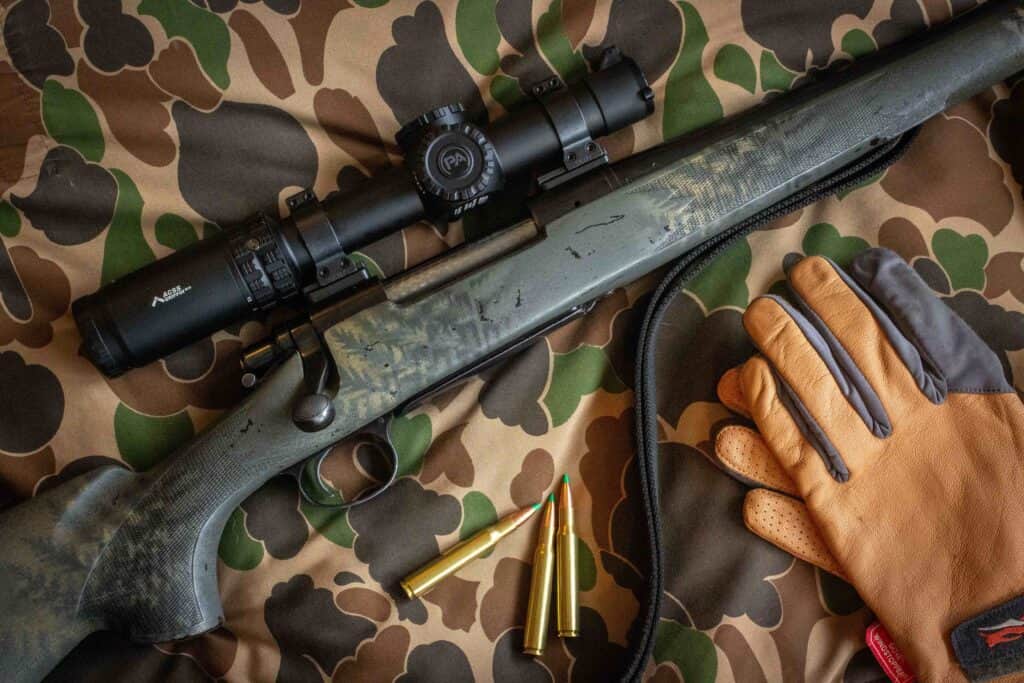
With the increasing popularity of low-powered variable optics (LPVOs) in the firearms space, it is no wonder that they are “starting” to be seen on deer hunting rifles. Using LPVOs for deer hunting can make your rifle capable of just about anything.
The LPVO’s wide magnification range makes it a perfect fit for a deer rifle that has to do everything from push clear cuts to overwatch a field just before dark. While most commonly found on AR-style rifles today, they are also a great fit on your favorite bolt action rifle.
The LPVO is not new to hunting; it has been used on hunting rifles since the 1920s. Its popularity died off for a while as other optics took over. However, it is back and better than ever.
Affiliate Disclosure: This article may contain affiliate links. When you use these links, I earn a small commission from each sale generated at no cost to you. This commission helps me continue to put out free content. I work a full-time job that I am very happy with; therefore, I don’t need this commission and am not obligated to speak highly of any product. Everything written is my own opinion: the good, the bad, and the ugly.
- Understanding the LPVO Scope
- Advantages of LPVOs for Deer Hunting
- Choosing the Right LPVO for Your Deer Rifle
- Mounting an LPVO to a Bolt Action Rifle
- Sighting in Your LPVO
- LPVOs for Deer Hunting
Understanding the LPVO Scope
The Low-Powered Variable Optic(LPVO) is a variable-powered optic with a wide zoom capability starting at 1x and ending between 6x and 10x. This versatility in the hunting realm is unmatched and allows users to make fast close shots in thick timber while also being able to hit targets at 500 yards or more accurately.
Early LPVOs were much to be desired and just weren’t up to par with some of the quality variable-powered scopes found on the market at the time. It wasn’t until the U.S. Military saw a need for it that the LPVO was improved and perfected.
The LPVO has been used on hunting rifles for a long time. They have remained popular in Europe, where driven hunting is a big part of their culture. Up until recently, the sportsmen and women of the United States hadn’t quite caught on to the advantages of this style of optic.
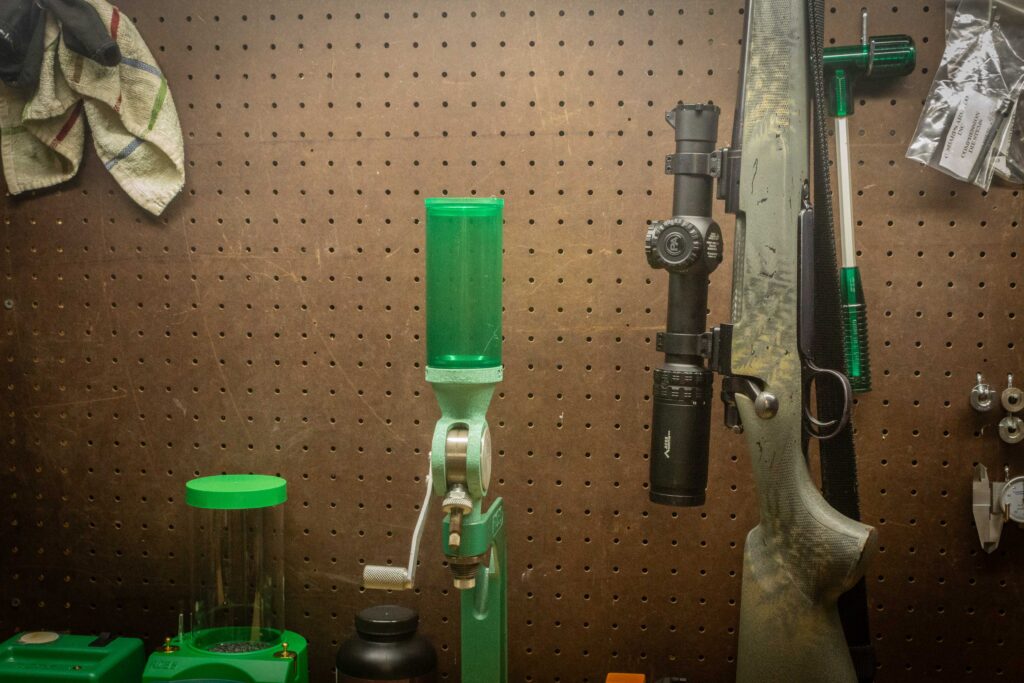
Advantages of LPVOs for Deer Hunting
Just about every deer hunter is familiar with variable magnification at this point. When looking for a scope for a deer rifle, you end up playing every scenario through your head. “What if the buck of a lifetime is coming straight at me through the brush? Sometimes, I hunt the powerline close to home. I’ve seen deer at 400 yards there. What would be best for that? Is there something that can cover both of those scenarios?”
Use coupon code KTG10 to get 10% off your order of $150 or more at Brownells.
Previously, while playing out these scenarios in your head, you almost always chose a classic 3-9×40 scope. It has low enough power to acquire a target quickly but high enough power to be accurate when needed. Today, however, you likely ended up here considering one of the many LPVOs on the market.
While I truly believe there is no perfect scope to cover every hunting scenario in the deer woods, the LPVO class of scopes is getting closer to that.
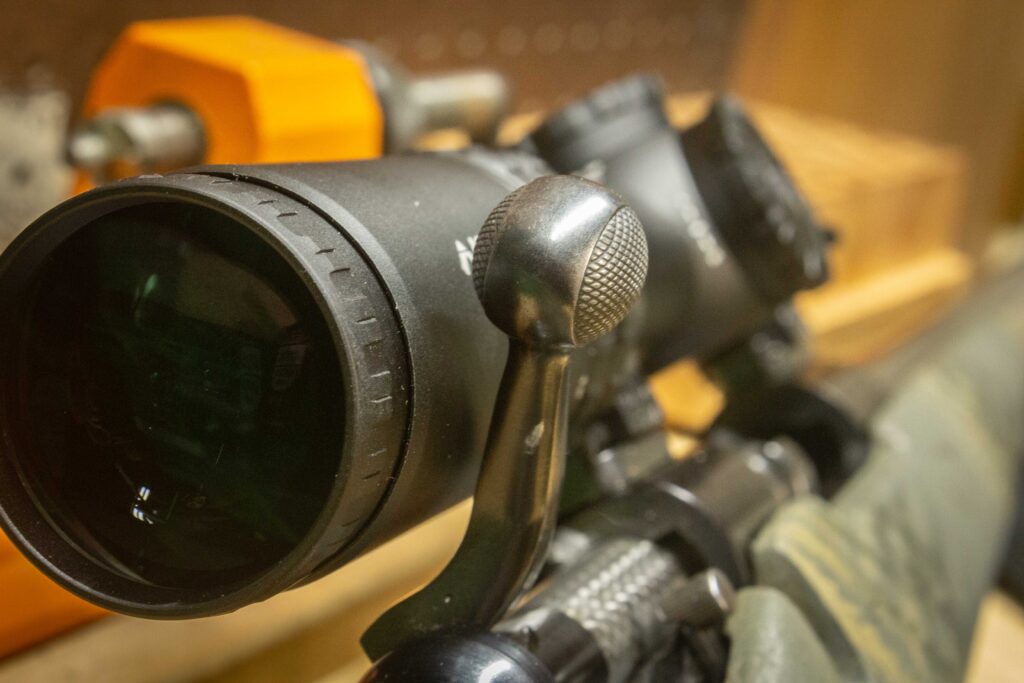
Choosing the Right LPVO for Your Deer Rifle
You should look at many different things when choosing LPVOs for deer hunting. Reticle type, magnification range, and focal plane are the main things that you need to consider.
Reticles
One of the first things you’ll notice when looking at LPVO scopes is the overload of reticle options. There are so many different reticles that it can get confusing. Really, this will come down to your experience levels and what you want out of the scope. Will you use range-finding features within some reticles, or do you want a simple reticle with a clear sight picture?
Reticles like the Primary Arms ACSS Griffin M10 are complex at first, but once you are familiar with them, they are extremely useful. While holdovers are an obvious advantage, there are ways to determine range quickly as well. So when that buck steps out on the power line, you don’t have to waste precious time fumbling with your rangefinder. Remember that your focal plane really plays into this, which we will touch on next. If you prefer a simpler reticle, they are out there as well. Find what you like and spend some time using it.
Lastly, we need to touch on illuminated reticles. They are a great option to have and unmatched in low-light scenarios. They can act similarly to a red dot when turned down to low magnification, meaning they are great at quickly acquiring targets. Fortunately, just about every LPVO on the market includes an illuminated reticle. Most of these illuminated reticles must be turned on to be used. When not in use, your reticle will still be there and work as advertised.
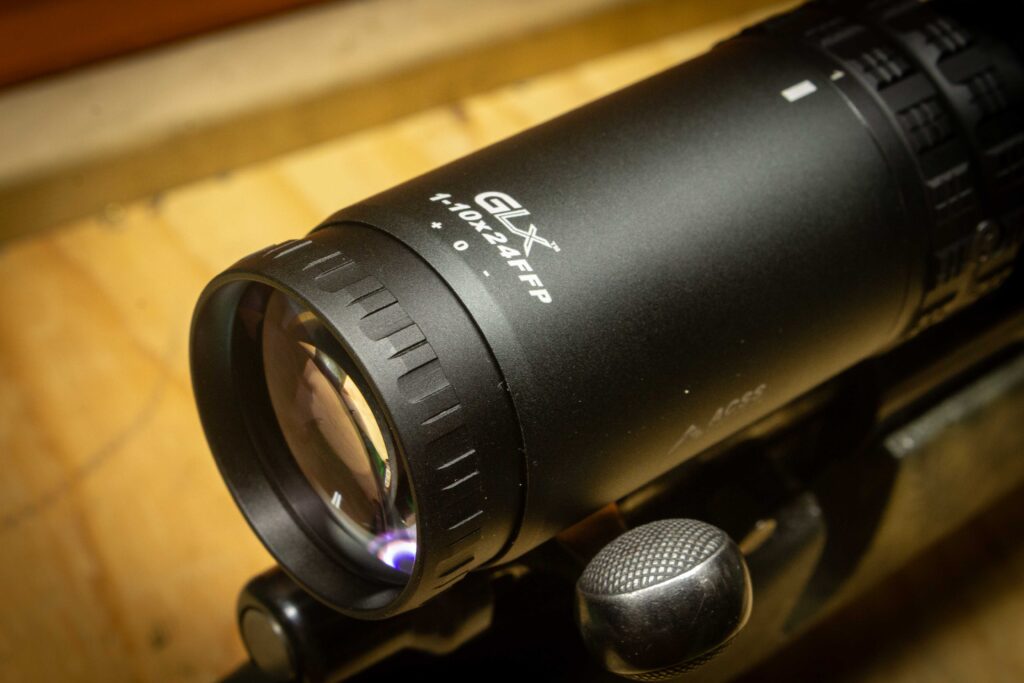
FFP vs SFP
FFP (First Focal Plane) scopes scale the reticle with the magnification level, ensuring accurate drop compensations and holdover measurements at any zoom level. However, they tend to be pricier and may lead to a changing sight picture, potentially causing confusion for less experienced users. At the lowest level of magnification, the reticle is pretty hard to pick out in brushy areas. However, turning on the illuminated reticle tends to fix this, making it work similarly to a red dot scope.
On the other hand, SFP (Second Focal Plane) optics maintain a consistent reticle size across their zoom range, offering accurate holdovers and drop compensations only at the highest magnification. These scopes are more budget-friendly and provide a steady sight picture throughout. If you are like me, meaning most of your deer hunting is done under 200 yards, a SFP scope will be entirely sufficient.
Magnification Range
The magnification level you opt for should align with your intended shooting ranges. As a general guideline, it’s recommended to have 2x magnification for every 100 yards. Consequently, a scope with a 1-6x magnification range would be well-suited for shots up to 300 yards, a 1-8x for 400 yards, and a 1-10x for 500 yards. Of course, these scopes can extend beyond these ranges, but these values represent the most practical applications.
The choice of magnification level also influences your “eye box,” which determines how forgiving the eye relief is before encountering parallax issues. With higher power ratios, the eye box becomes more restrictive. Therefore, if your shooting scenarios typically involve distances under 200 yards and occasional shots at 400 yards, a 1-6x scope may be the optimal choice due to its versatility and forgiving eye box.
For further considerations when choosing an LPVO, check out my article, The Rise of the LPVO: All You Need to Know & How To Use Them.
Mounting an LPVO to a Bolt Action Rifle
Mounting an LPVO to a traditional bolt rifle may be slightly different than you are used to. The bell size can be an issue with bolt clearance, and with a long action, you may run out of mounting space on your scope tube to get the proper eye relief. Luckily, there are options out there if you know where to look.
The bell size refers to the diameter of the scope at the end that you look through. LPVOs tend to have a larger belt size than the traditional scope, sometimes causing bolt clearance issues when mounting low on a bolt action rifle. This is a lot more prevalent on Remington 700-type actions that have a 90° bolt throw.
If your bolt rifle is equipped with a Picatinny rail, you are in luck, and it’ll be pretty easy to figure out a mounting solution. The rail typically puts your scope high enough that you won’t run into any bolt clearance issues. Also, these rails give you many different mounting positions for your rings, eliminating the potential problem of running out of room on your scope tube.
Related Article: Rifle Sight Height: Is It Really That Important?
While the Picatinny rail is probably the best mounting option for an LPVO and bolt action rifle, I prefer to go a different route. Picatinny rails on bolt rifles tend to be a little bulky. I like to use the traditional ring and base combo from Talley. This keeps my ejection port wide open, making loading that much easier. When using this combination on my Remington 700, the bases and low rings gave me enough clearance for the large bell on the Primary Arms GLX 1-10×24 scope. However, I did have to remove the quick throw lever from the magnification to get the right clearance, and the rear flip scope caps had to go for the same reason.

Sighting in Your LPVO
Everyone will have different opinions on how you should site in your LVPO scope. Typically, there will be two trains of thought here: sight in for 100 yards or sight in for maximum point-blank range.
Sighting in for 100 yards is optimal if you’re going to use a more complex reticle for holdovers. This is pretty standard and makes math easy when the time comes. Also, I would guess that most deer shot in North America are shot at distances less than a hundred yards. This, again, keeps things simple.
Maximum Point Blank Range was a favorite of Jack O’Connor. While it is very versatile, it can also add some complexities that you may not be used to. This way of sighting in a rifle works best for simple reticles like the duplex style, which aren’t typically found on LPVO scopes. However, if you would like to read more about sighting in a rifle for Maximum Point Blank Range, here’s an article I wrote detailing that process.
Related Article: The Swampfox Arrowhead: What I Love and Hate About It
LPVOs for Deer Hunting
I’m not new to the world of LPVOs. In fact, I’ve really fallen in love with them. Their versatility is unmatched, in my opinion. While I have multiple LPVOs mounted to AR-style rifles for everything from predator hunting to self-defense, I recently have been toying around with the Primary Arms GLx 1-10×24 on my Remington 700 chambered in 30-06.
This rifle is light and fast handling, making quick shots in the clear-cuts of Pennsylvania a breeze. While I won’t be switching all of my deer rifles to LPVOs anytime soon, I really like the concept and idea. I foresee them growing in popularity within the hunting space in the coming years and look forward to any advancements in the space.
Have you used an LPVO on your hunting rifle? Comment below on your experiences and what you liked and didn’t like. You may help someone with their decision!
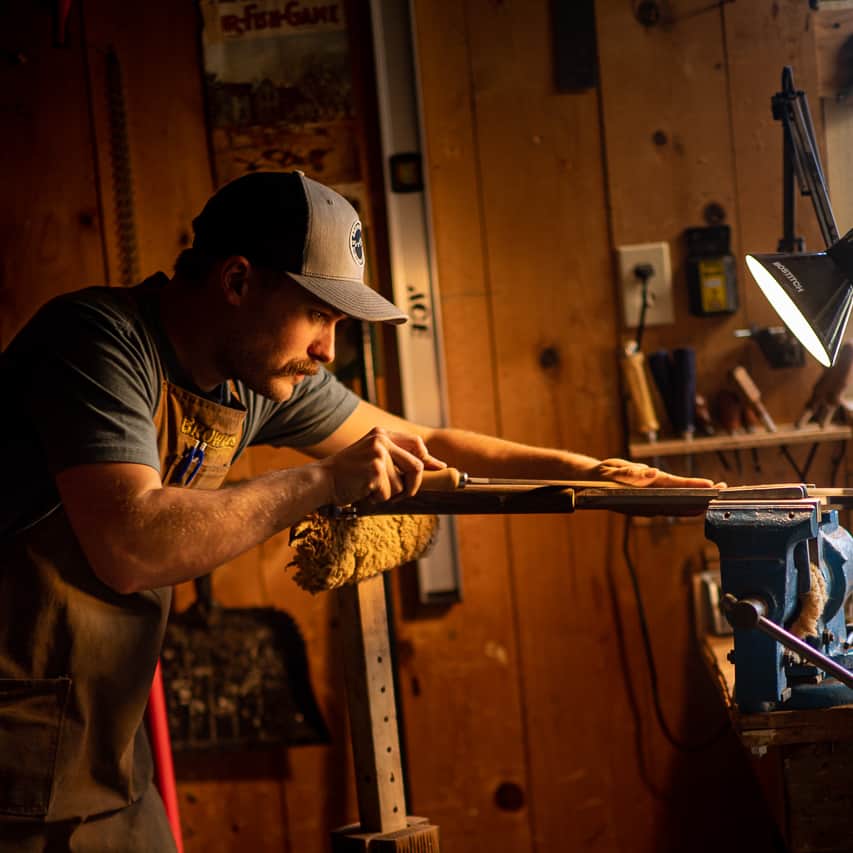
Written by: Kurt Martonik
Kurt is a Gunsmith, Reloader, Hunter, and Outdoorsman. He grew up in Elk County, Pennsylvania, where he became obsessed with the world of firearms. Following high school, Kurt enlisted in the United States Air Force as a Boom Operator, where he eventually rose to the position of Instructor. After his military service, he attended the Colorado School of Trades(CST) in Lakewood, CO for gunsmithing. Following graduation, he accepted a job at C. Sharps Arms in Montana, where he worked as a full time stockmaker and gunsmith.